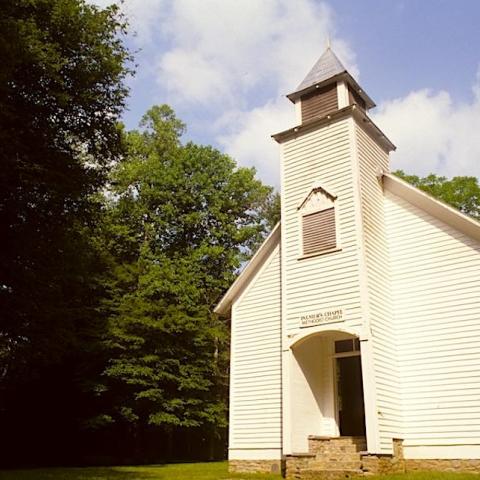Flooding, power outages, and downed trees were among the issues national parks were facing in the aftermath of Helene, which evolved from tropical storm to hurricane and back to tropical storm as it rampaged from the Gulf of Mexico north into Appalachia.
All National Park Service personnel were accounted for and safe, according to the agency, but the extent of damage led the Park Service to deploy its Eastern Incident Management Team to assist parks in Florida, Georgia, South Carolina, and North Carolina with damage assessments and recovery. The team was coordinating with parks, the Federal Emergency Management Agency, and other agencies on their actions.
For many communities in North Carolina and Virginia, the storm couldn't have hit at the worst time, as the fall foliage season is just picking up, and those communities typically enjoy an influx of tourist dollars through much of October. How the aftermath of Helene affects that economic boost remains to be seen.
Some parks remained closed, such as Cumberland Island National Seashore and Fort Pulaski National Monument in Georgia, while others were in varying states of operations. While Great Smoky Mountains National Park on the border of Tennessee and North Carolina technically was open, the cross-park Newfound Gap Road was closed with no reopening date mentioned.
"Several park employees in both North Carolina and Tennessee are dealing with emergencies at home or are unable to drive to work due to closed roads. Multiple employees are also assisting the Blue Ridge Parkway and surrounding communities," a park release said. "While we recognize that this is a popular time to visit the park, visitors are encouraged to reschedule their trips for their own safety.
"If visitors choose to visit, they are asked to recreate responsibly—know your limits, avoid water recreation and know that emergency response times may be delayed. Hiking and backcountry travel are not recommended due to the unpredictability of creek crossings, potential of downed trees and other hazardous trail conditions. Emergency services are currently stretched thin and have already responded to several incidents (many unrelated to the storm) in the last several days."
Areas closed in Great Smoky Mountains included:
- Balsam Mountain area, campground and roads.
- Big Creek area, campground and roads.
- Cataloochee Valley area, campground and roads (including Hwy 284).
- Deep Creek (the creek itself) between Indian Creek Bridge and the park boundary closed to all water activity.
- Deep Creek Campground.
- Foothills Parkway East.
- Kuwohi Road (formerly known as Clingmans Dome Road).
- Kuwohi Visitor Center.
- Lakeview Drive.
- Newfound Gap Road/Hwy 441.
- Oconaluftee Visitor Center.
- Parson Branch Road (due to Flint Gap Fire impacts).
- Smokemont Campground
Along the Blue Ridge Parkway, which runs 469 miles from Shenandoah National Park to Great Smoky Mountains, the entire section that runs in North Carolina was closed Monday due to unspecified impacts.
So much damage was sustained in Georgia and North Carolina that hikers were being asked to stay off the Appalachian National Scenic Trail in those states.
"Great Smoky Mountains National Park is recommending that visitors reschedule their trips. The states of North Carolina, Tennessee, and Virginia have declared a state of emergency," read an announcement on the Appalachian Trail Conservancy's website.
According to that group, the Nantahala and Pisgah national forests in North Carolina were closed. In Shenandoah National Park in Virginia it was reported that some trails were closed due to downed trees and flooding and park staff were warning that some areas might have dangerous conditions, such as impassable stream crossings.
"Hikers should postpone their trips to the southern A.T. until further notice (Georgia through central Virginia). There is still a risk of landslides in many areas, much of the A.T. in the south is inaccessible due to road closures, and emergency responders are at max capacity," the Appalachian Trail Conservancy said. "There also may be dangers on the trail from the storm like downed trees, severe erosion, washed out bridges, and swollen creeks and streams. Please postpone your A.T. hike until the situation improves and damage can be assessed.
Sandi Marra, the president and CEO of the Conservancy, said Saturday that "[M]ore than a third of the Appalachian Trail is currently inaccessible, and we expect sections of the trail will be closed for sometime because of bridges that have washed away and downed trees and mudslides obstructing the treadway. A.T. Communities such as Damascus, VA; Erwin, TN; and Hot Springs, NC have been devastated."
At Congaree National Park, staff said on its social media channels that "[M]ost trails, including the boardwalk, are severely flooded and will likely remain under water for some time after the park reopens. Once the flood water has receded, park staff will begin repairs to the boardwalk and other trails."
Elsewhere, the Opal Beach Complex of Gulf Islands National Seashore in Florida opened Sunday, with the Fort Pickens area reopening Monday. Fort Pulaski National Monument in Georgia was set to reopen Tuesday. While the storm did minimal damage to the monument, an extended utilities outage across the park resulted in a multi-day closure, a park release said.
Also closed Monday was Fort Frederica National Monument in Georgia, De Soto National Memorial in Florida, the Carl Sandburg Home National Historic Site in North Carolina, the Andrew Johnson National Historic Site in Tennessee, parts of Cumberland Gap National Historical Park in Tennessee/Kentucky/Virginia, Congaree National Park in South Carolina due to power outages, Cowpens National Battlefield in South Carolina, Kings Mountain National Military Park in South Carolina, and Ninety Six National Historic Site in South Carolina.




 Support Essential Coverage of Essential Places
Support Essential Coverage of Essential Places







Add comment